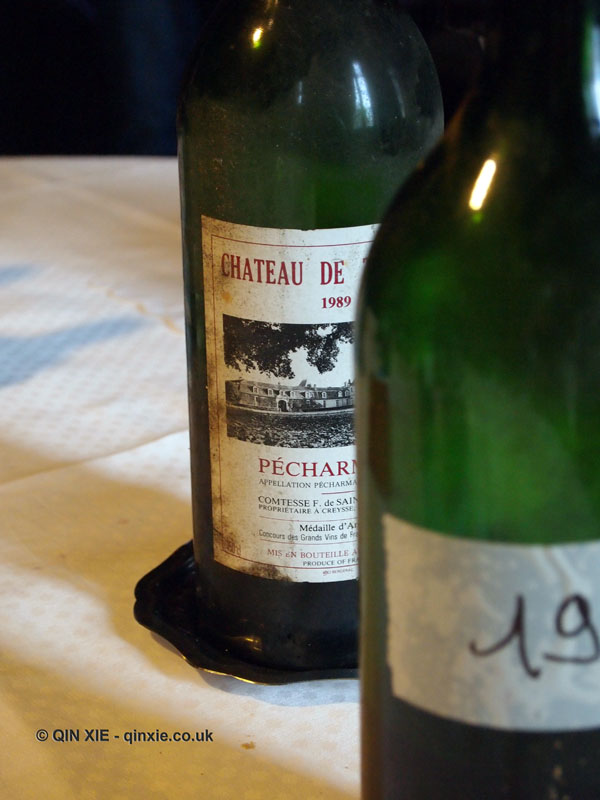This is a post in the Spotlight on: Bergerac series
The Château at Château de Tiregand showed tell-tale signs of the enormous wealth of the family in the years gone by, not only in the size of the building but also in the basic facilities. Today it stands in strange contrast to modernity.
The courtyard that once welcomed horse-drawn carriages, with room for at least six carts, now provides ample facilities for parking cars. The pair of zinc windows, recently restored in Paris for a sum of more than 30,000 euros, glistened in the setting sun the way that its modern counterparts could never imagine. And what seemed like abandoned dove cots were in fact homes to ostriches that would have been de-feathered to furnish the hats of the ladies of the house.
All that pomp aside, the Château is still making incredibly good wines.
I took part in a vertical tasting of the Grand Millésime Cuvées, a blend that’s considered the best wines of the house. It’s one which, over time, has changed from a Merlot-dominant blend to one with Cabernet Sauvignon at its heart.
Starting with a youthful 2011, the Grand Millésime 2011 was incredibly smooth and fruity with red berries, strawberry and sweet cherry notes coming through.
The Grand Millésime 2010 was more restrained with blackberry dominating backed by myrtle and herbaceous vanilla.
Grand Millésime 2009 swings back to strawberry but also includes black cherry and blackberry as well as bramble fruits and sour cherry, all while managing to be extremely smooth.
The Grand Millésime 2008 proves to be a very complex blend of Cabernet Sauvignon, Cabernet Franc, Merlot and Malbec. The result is a heady blend of red cherry and blackberry with liquorice, flanked by soft, silky tannins and the first peaks of development.
It begins to get rather smoky with the Grand Millésime 2007 where the black cherry fruits have developed into rounded chocolate notes. While the tannins have become smooth and developed, the acidity is still high.
While the Grand Millésime 2005 is looking more developed in colour, with the beginnings of sediments, on the palate it actually feels fresher than the Grand Millésime 2007. Again, high tannins, black cherry and bramble fruits show through.
The Grand Millésime 2001 was showing incredibly well. The complex nose spoke of leafy development with blackberry notes while the herbaceous, minty, sweet spice on the palate added an extra dimension. Somehow, it manages to be refreshing enough to still feel youthful.
Grand Millésime 2000 unfortunately turned out to be rather green and stalky with leafy herbaceousness and a mix of red and blackcurrant. It’s also the first vintage where the previously Cabernet Franc dominant blend was changed to Cabernet Sauvignon.
The change was obvious when you try the Grand Millésime 1998, a Merlot and Cabernet Franc blend, which was all strawberry and chocolate but not very developed.
Changing to a much older blend, I tried some seriously old vintages from the Pécharmant area. It’s a region close to Bordeaux with a significant amount of iron in the soil.
The Pécharmant 1989 spoke of prunes and cherries with lots of animal and vegetal development. The Pécharmant 1983 had visibly aged with brown tints and slightly oxidised character to its coffee notes. However, while the clearly perfectionist owner (who asked not to be written about) said the wine was passed it, I thought it was still drinking incredibly well with notes of cherry and liquorice still showing through in the long finish.
But even without extensive ageing, the Pécharmant wines were extremely expressive. The Pécharmant 2010 had spicy vanilla notes underpining herbaceous blackberry and violets.
On the more mass market side, the Bergerac Blanc 2012 was crisp with rounded citrus (lemon in particular) and extremely high acidity. The first sample I tried of this had actually been left open for eight days, mistakenly sampled obviously, but even so, it remained fresh and vibrant. Now that is a good wine.


[…] Château de Tiregand […]